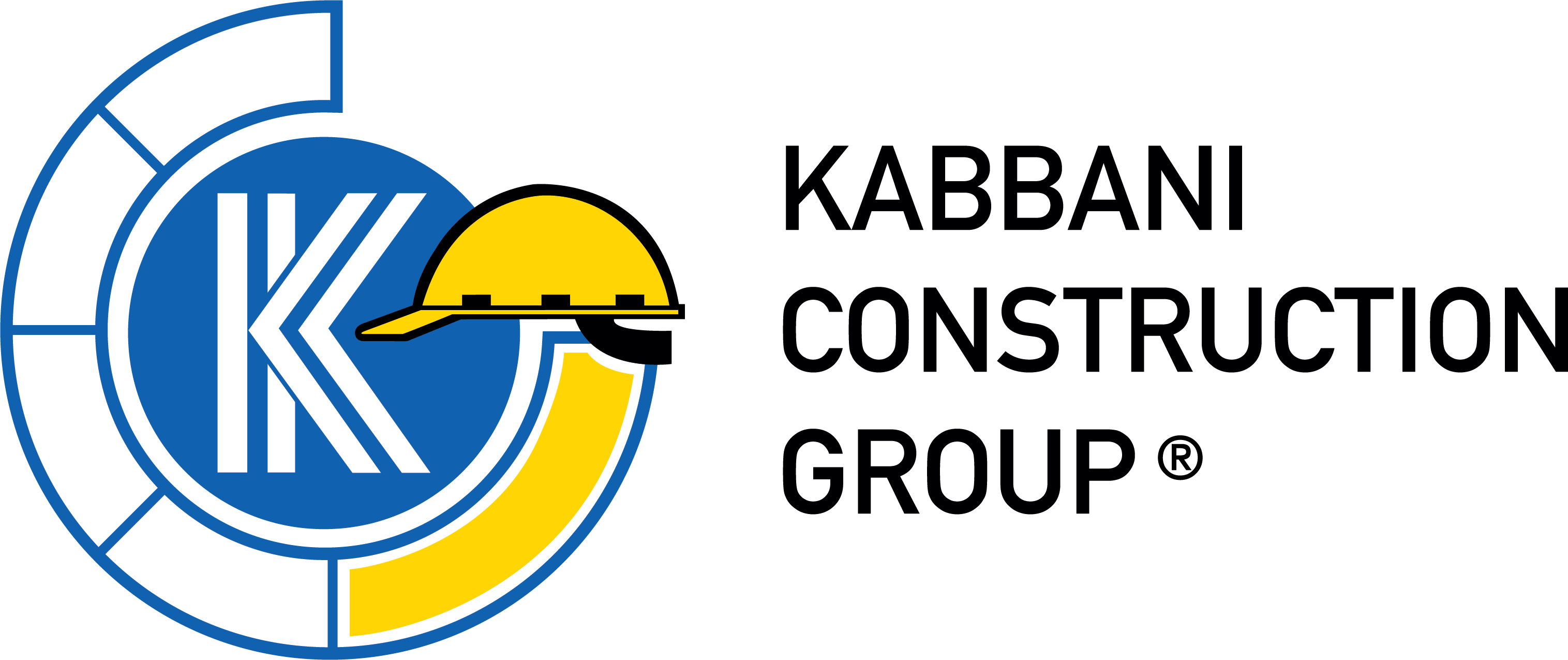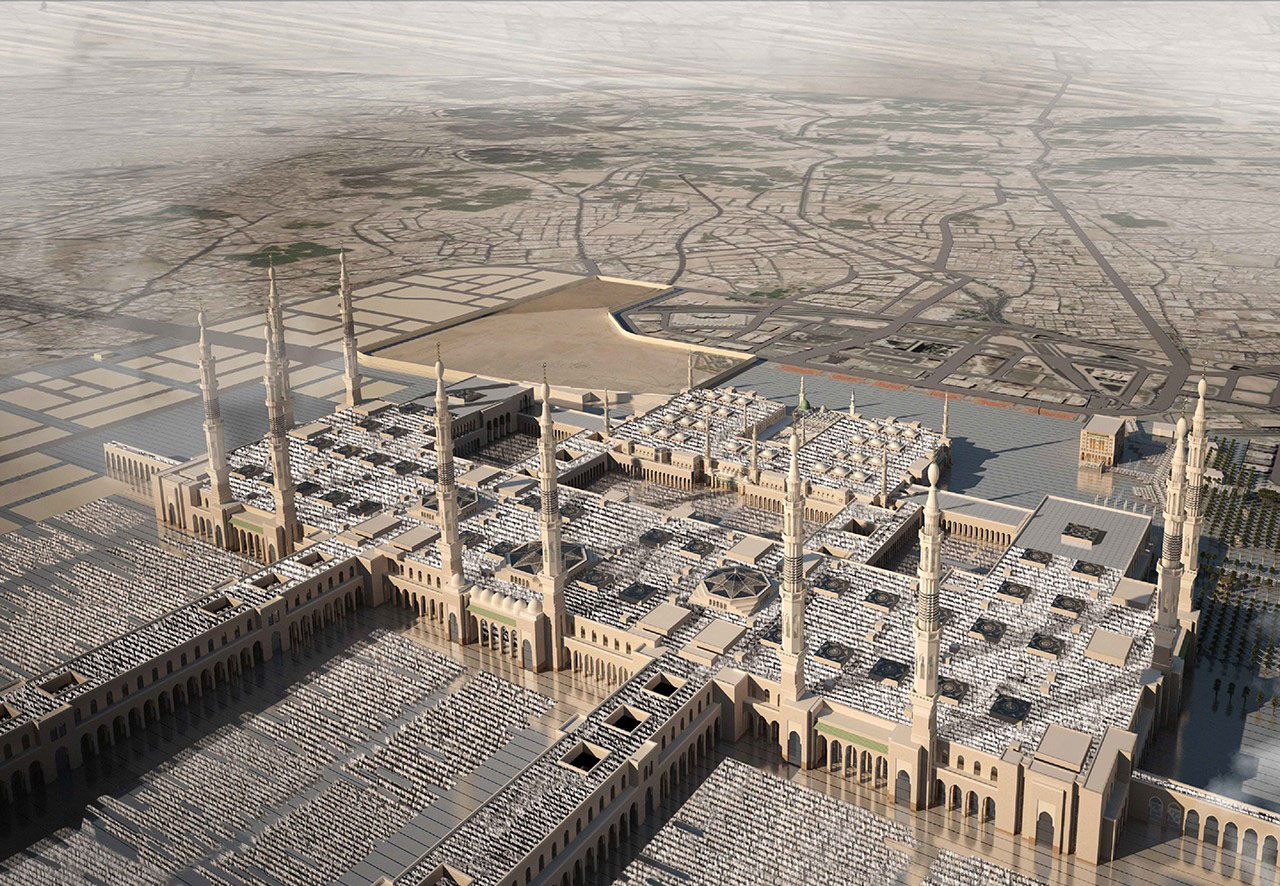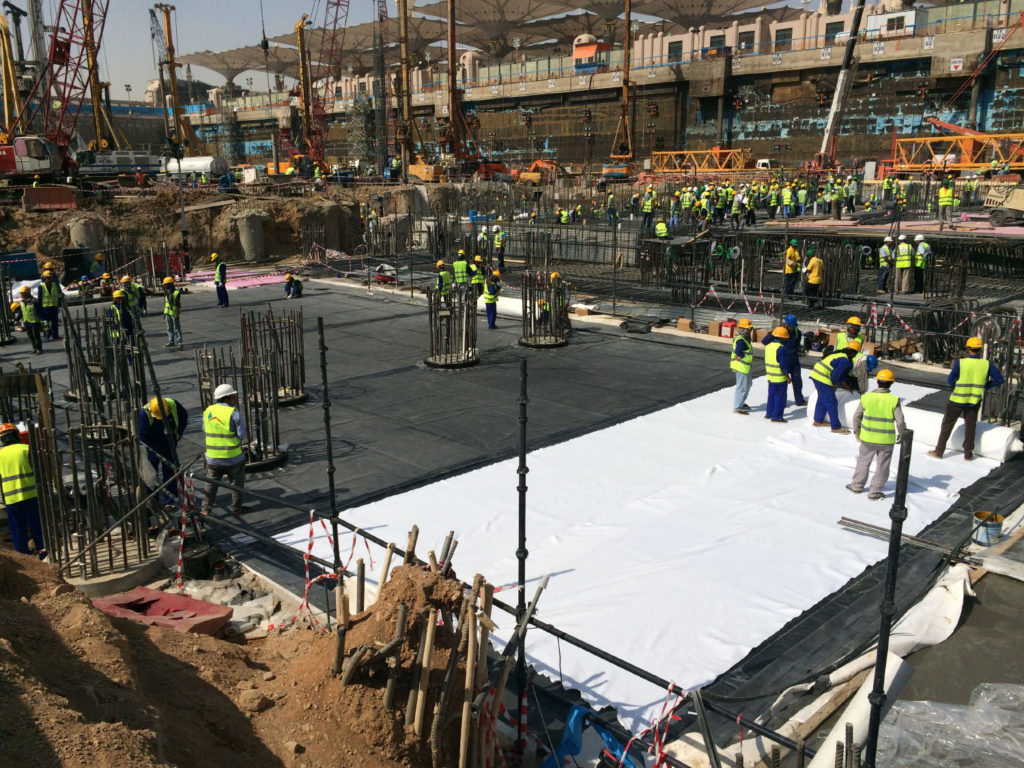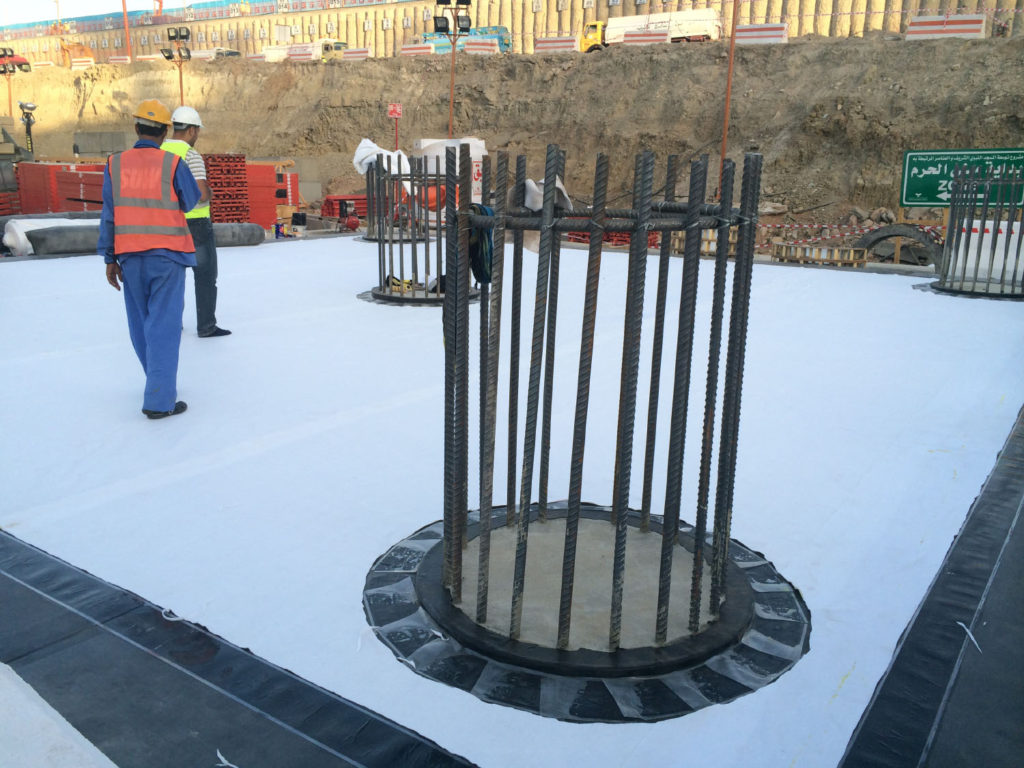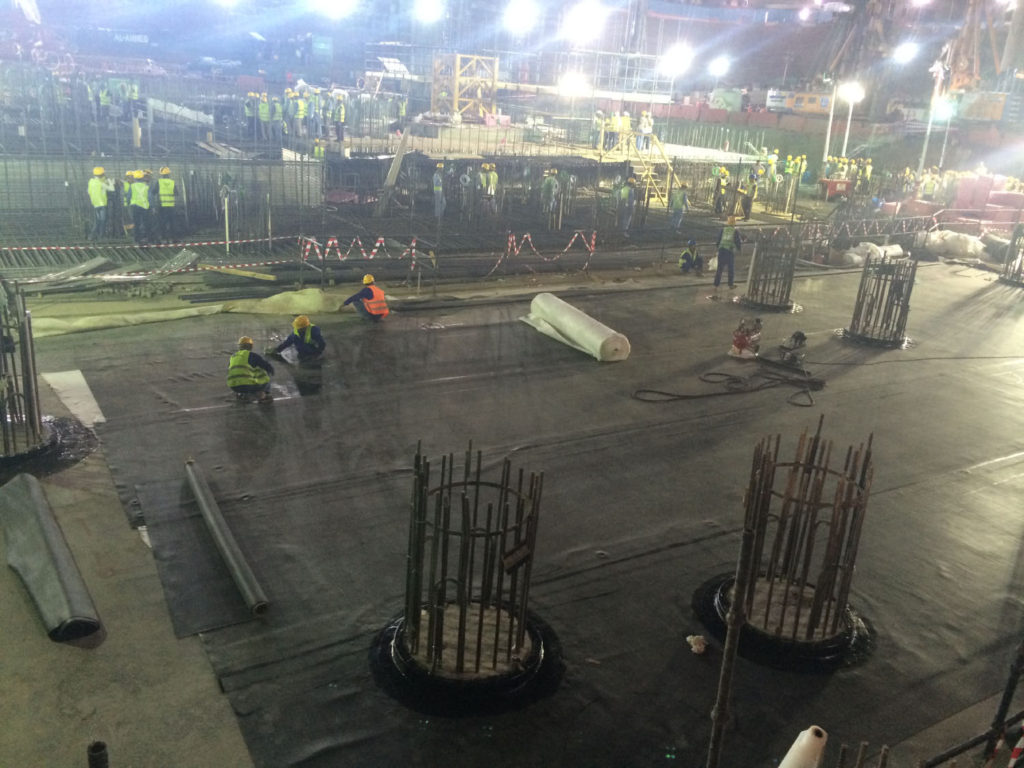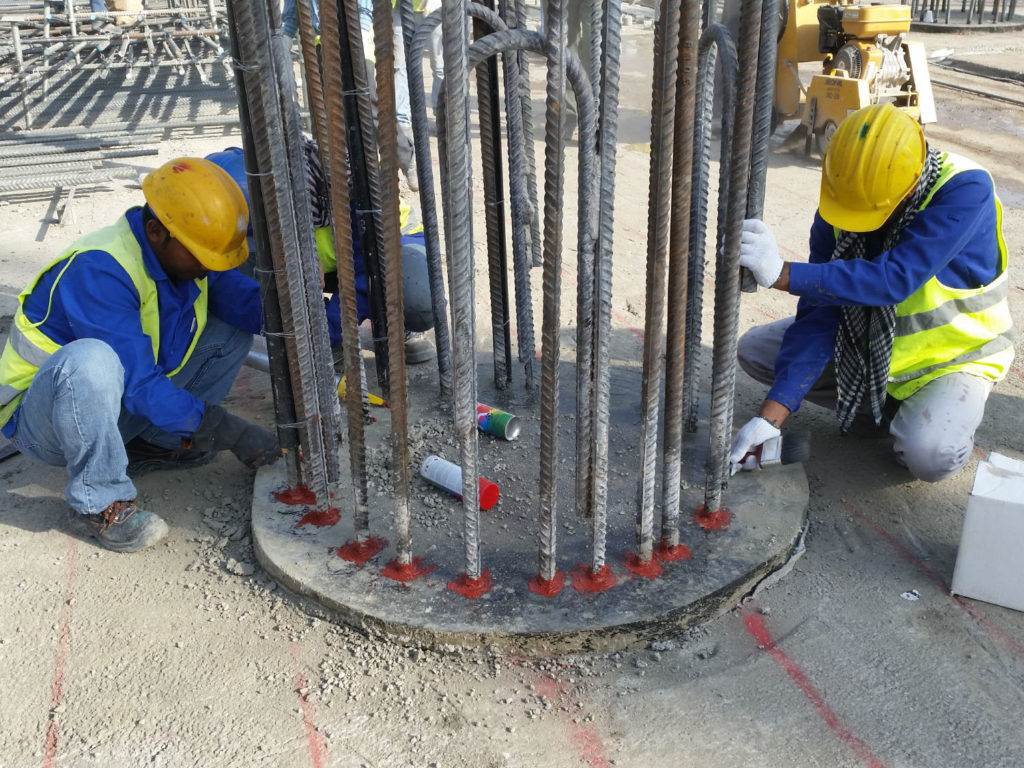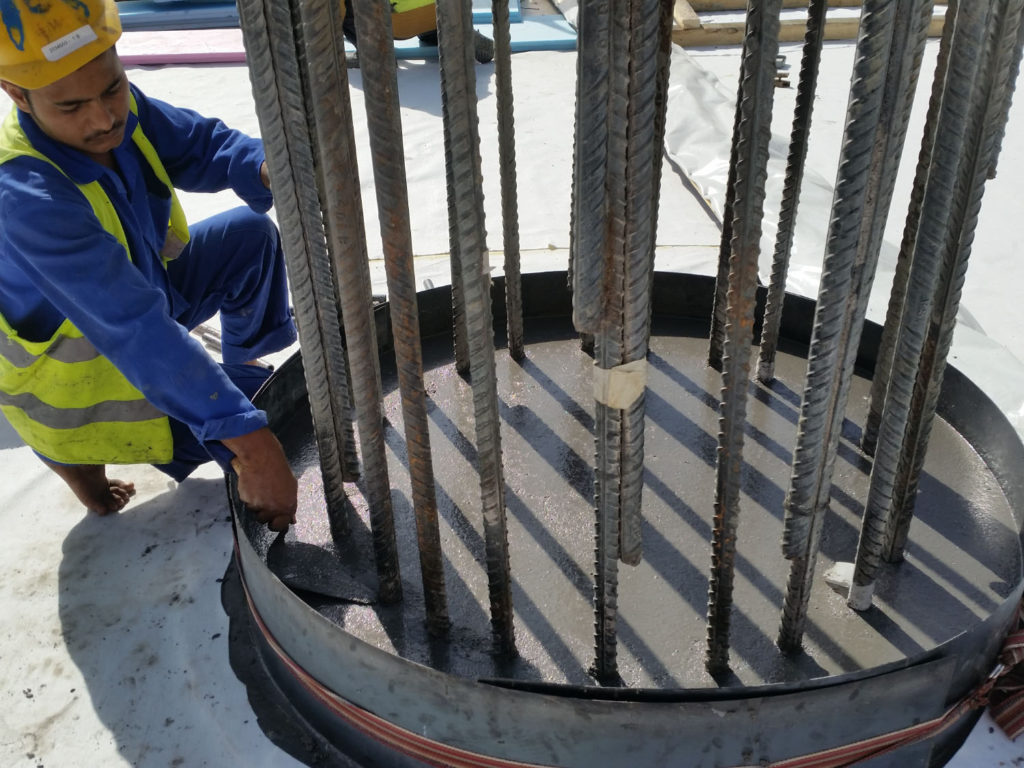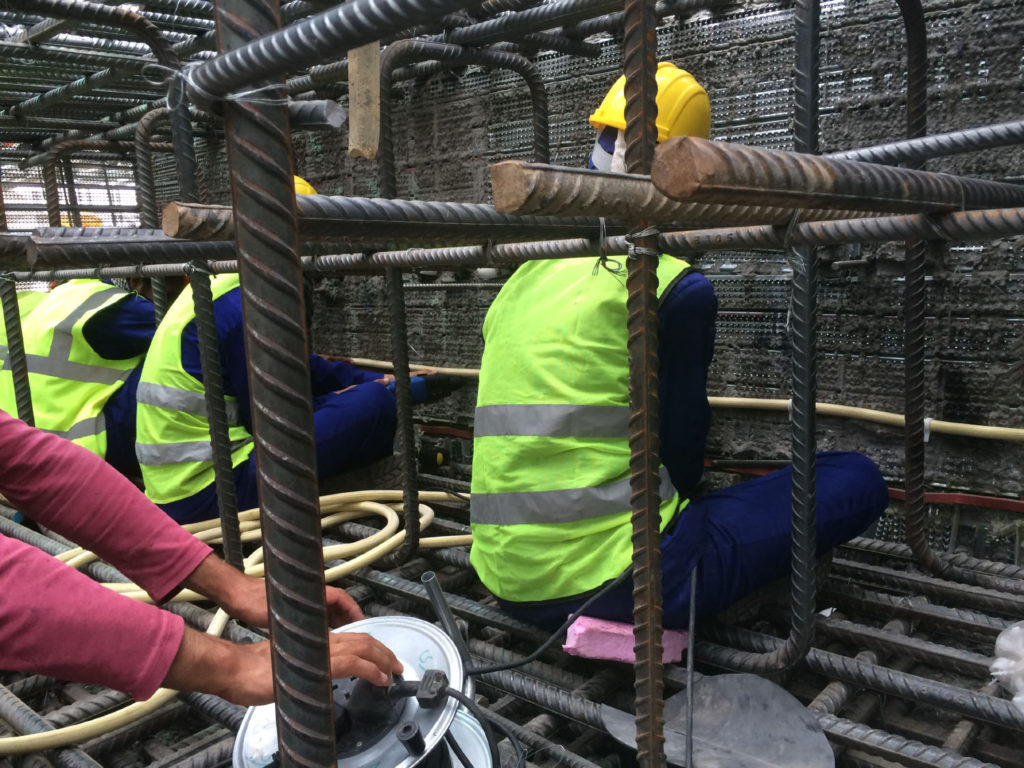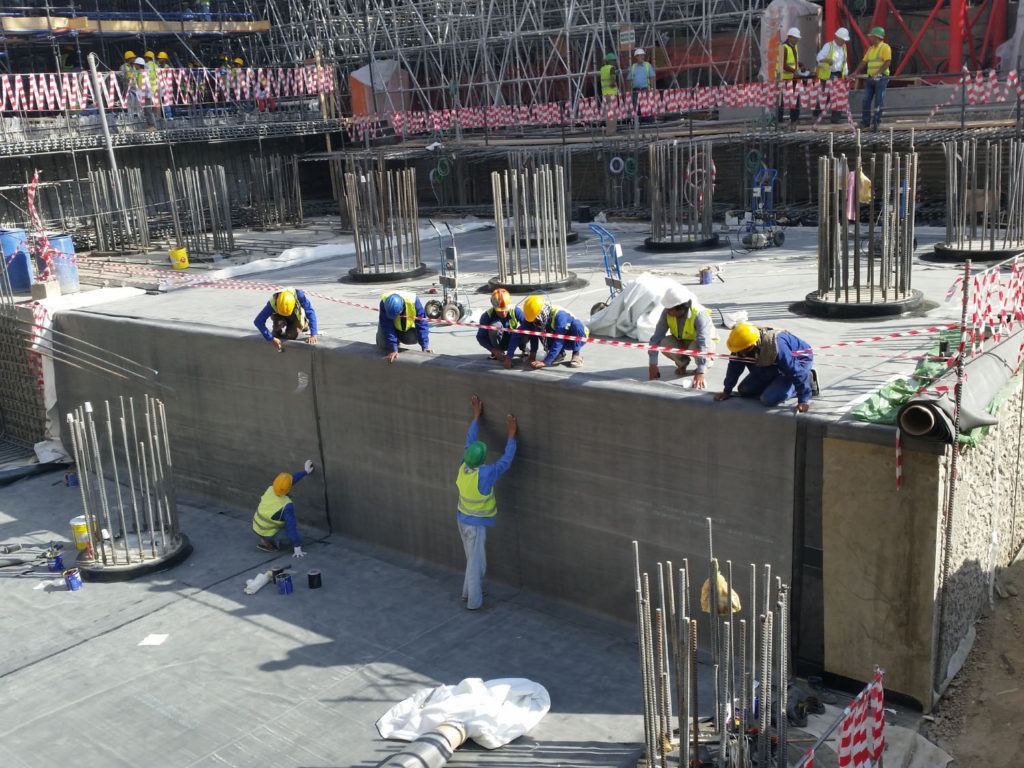We are proud to say that SUW has completed work on the expansion of the Prophet’s Mosque in Al Madinah in Saudi Arabia. The Prophet’s Mosque is a mosque established and originally built by the Islamic prophet Muhammad, situated in the city of Al Madinah in the Hejazi region of Saudi Arabia. It was the third mosque built in the history of Islam,and is now one of the largest mosques in the world. It is the second-holiest site in Islam, after the Great Mosque in Mecca.It is always open, regardless of date or time.
The original mosque was an open-air building. The mosque served as a community center, a court, and a religious school. There was a raised platform for the people who taught the Quran. Subsequent Islamic rulers greatly expanded and decorated it. In 1909, it became the first place in the Arabian Peninsula to be provided with electrical lights.The mosque is under the control of the Custodian of the Two Holy Mosques. The mosque is located in what was traditionally the center of Medina, with many hotels and old markets nearby. It is a major pilgrimage site. Many pilgrims who perform the Hajj go on to Medina to visit the mosque, due to its connection to Muhammad.
After an expansion during the reign of the Umayyad caliph al-Walid I, it now incorporates the final resting place of Muhammad and the first two Rashidun caliphs Abu Bakr and Umar. One of the most notable features of the site is the Green Dome in the south-east corner of the mosque, originally Aisha’s house, where the tomb of Muhammad is located. In 1279, a wooden cupola was built over the tomb which was later rebuilt and renovated multiple times in late 15th century and once in 1817. The current dome was added in 1818 by the Ottoman sultan Mahmud II, and it was first painted green in 1837, hence becoming known as the “Green Dome”.
An expansion for the Prophet’s Mosque was approved by the Custodian of the Two Holy Mosuqes HRH King Salman bin Abdulaziz in 2017. The purpose of the expansion is to increase the capacity due to the increasing amount of visitors to the Prophet’s Mosque. The challenge was to conduct the work without hindering any of the guests and visitors.
The expansion of the Mosque was spread out over an area of 1,020,500 square meters, with the mosque building alone occupying an area of 614,800 square meters. The project involved the expansion of the northern side sprawling 1,250,000 square meters of land and also included the construction of a helipad for airlifting patients to hospitals, new roads separated from pedestrian pathways, 15,000 toilets and a tunnel for pedestrian traffic with escalators.
The work SUW contributed to this highly esteemed project includes the installation and testing of an accomplished EPDM (ethylene propylene diene monomer rubber) compartment system, air lance tests for EPDM overlaps during consultant inspections, EPDM dressing for piles, pile head treatment with reinjectable hose installation and pile head rebars sealing with swelling materials. EPDM was used due to its ability to withstand extreme heat conditions, making it perfectly suitable for the project. The project ran smoothly and SUW were able to deliver it on time and on budget with no inconvenience caused to the visitors of the Holy Mosque.
